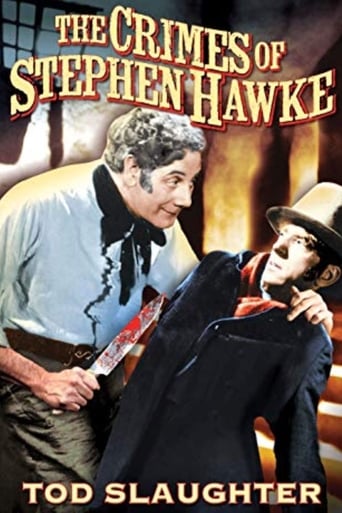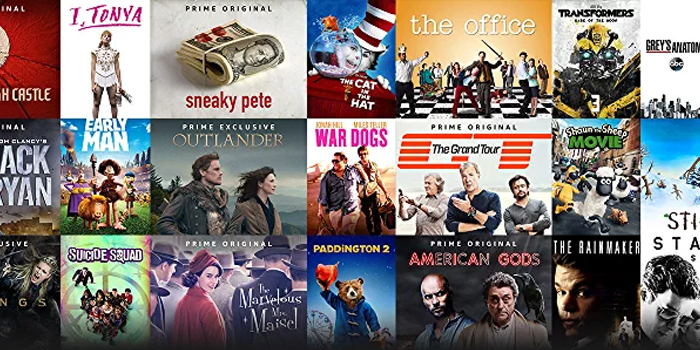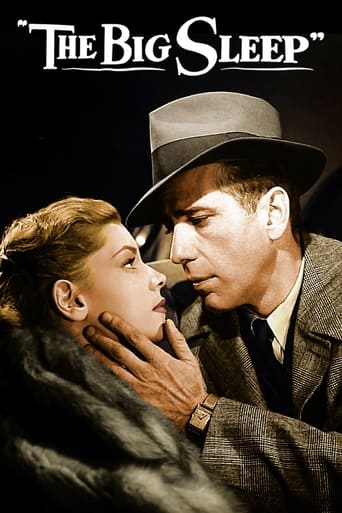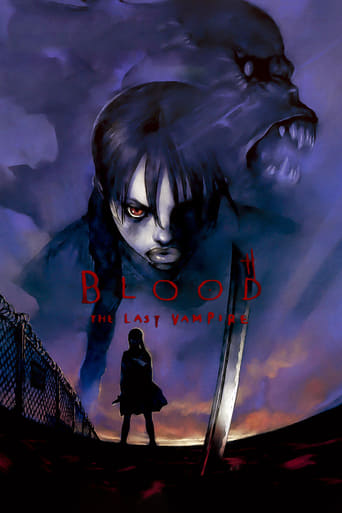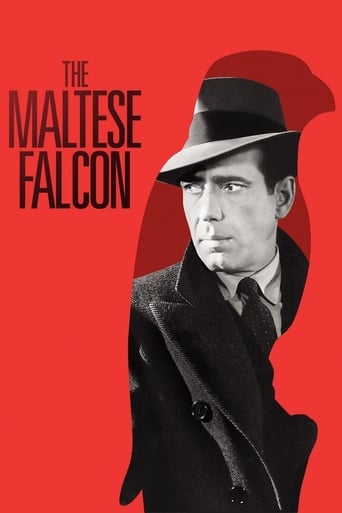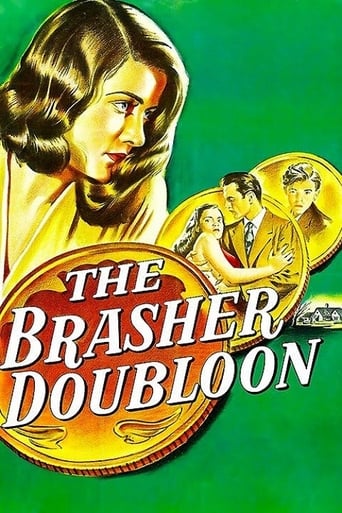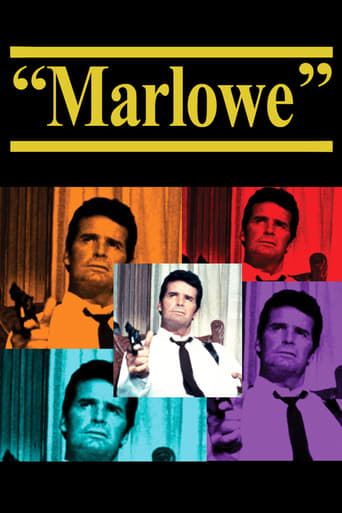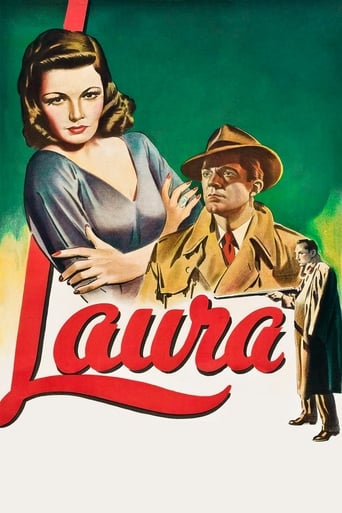The Crimes of Stephen Hawke (1936)
The film begins in a BBC studio with the 100th edition of "In Town Tonight". Flotsam and Jetsom open with a "topical number". Then there is an interview with a distinguished actor, which dissolves into a performance of one of his famous melodramas about a wicked moneylender etc.
Watch Trailer
Cast
Similar titles
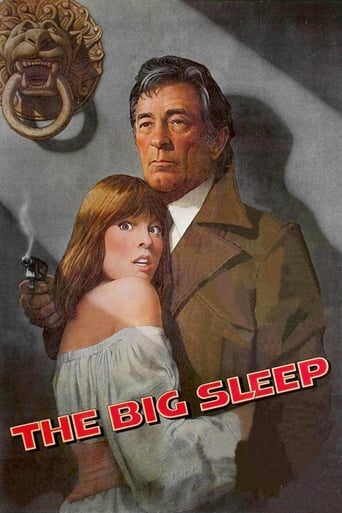
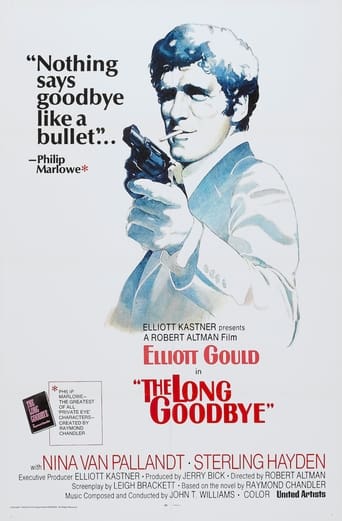
Reviews
At first rather annoying in its heavy emphasis on reenactments, this movie ultimately proves fascinating, simply because the complicated, highly dramatic tale it tells still almost defies belief.
A movie that not only functions as a solid scarefest but a razor-sharp satire.
Very good movie overall, highly recommended. Most of the negative reviews don't have any merit and are all pollitically based. Give this movie a chance at least, and it might give you a different perspective.
By the time the dramatic fireworks start popping off, each one feels earned.
Prior to Snidely Whiplash and Dick Dasterdly, there was Tod Slaughter, the mustache twirling, snickering Englishman who slit throats, shot young ladies whose virginity he stole and buried them in a barn, strangled innocent children, hammered spikes into brains, and here, is a back breaker. At least those cartoon villains didn't get to do that; They were too concerned with tying the heroine to the tracks or stealing state secrets (or a bag of loot) and too insipid to really get away with their crimes. With Tod Slaughter, we know from the moment he appears on the screen that he is the guilty party, and here, he's nasty from the start, breaking the back of a chunky rich kid who demands that he get out of their garden. More enemies follow suit, and in one of the creepiest scenes in a Slaughter film, he's confronted by the alleged ghost of one of his victims, sitting up in the morgue, and scarring the crap out of him. But once his crimes are exposed, he's sent out on the lam, to run through the countryside with the threat of being hunted, only because the person who exposed him is in love with Slaughter's daughter, and doesn't want to see her hurt.In a Slaughter film, the supporting cast never really matters. These barn stormers focused on Slaughter's nefarious laugh coming either before he kills somebody brutally, as he confronts them with their impending doom, and usually after the crime has been committed. Subtlety is never utilized in a Slaughter film, even if he does appear to genuinely be in love with the young heroine or devoted to a daughter, as he seems to be here. These films all have a formula: Introduce Slaughter as the culprit of a crime spree, have him commit a few of those crimes to give the viewer some chills, expose himself (usually by someone he's trying to frame) and the ultimate pay-off which always follows a mad scene. Slaughter gives his all to these types of roles, hysterically over the top. His films, usually directed by independent producer George King, look cheap, and the prints available aren't usually the best. The creakiness of those prints, though, is what makes him stand the test of time, and if his acting method is long dated, the films are fun to watch for their formula, the shear audacity of their ridiculousness, and cartoon like characterizations. When an actor makes Karloff and Lugosi look subtle, that's enough to warrant their place in the camp hall of fame, and if the films themselves are hardly classics, they are a heck of a lot of fun!
Tod Slaughter, Britain's first horror star – and still up there with the best – is at his lip-smacking, eye-rolling best in this decent horror offering that plays to his strengths. Directed by George King, who helmed many such pictures, this might not be as well known as SWEENEY TODD but it certainly packs a punch in its story of the 'Spine Breaker', a ruthless murderer essayed by Slaughter, who enjoys breaking the bones of his victims. Seen today, this film is still fairly shocking in places. It opens with the murder of a child, for instance, who we hear getting his spine snapped! From then on, there's a ton of plot packed into a barely hour-long running time. Slaughter sets himself up in a dual role as usual, with his innuendo-laden moneylender and sinister night-stalking killer. Watch out for the script that offers great lines for the actor, like "I'll get to grips with you soon enough" and "I'll be right behind you".Elsewhere there's a one-legged one-eyed hunchback hopping around for some menace, a ménage a trois between Slaughter's daughter, her lover and a creepy/lecherous aristocrat, and a sub-plot that sees our antagonist locked up in jail for nicking bread! Villains are whipped with cat-o-nine-tails, corpses raise beneath their death sheets, and there's a barnstorming climax that sees Slaughter being pursued to the rooftops! The other actors don't really get much of a look in, to be honest; this is Slaughter's film alone, and he makes a real ham of it. You don't see classic overacting like this in modern cinema! He's a real delight and this is one of his most entertaining flicks. As an added bonus, the film seems better for what precedes it: an excruciating comic-radio-duo, Flotsam and Jetsam, who sing for an age, and then the appearance of the infamous 'cats meat' man, a humorous butcher. Sure, it's dated, sure, it's cheap, but it sure is a lot of fun.
Todd Slaughter is at it again folks,, this time playing a well -mannered banker by day, and being a father to his adopted daughter , but by night folks he becomes...... wait for it..... the Spinebreaker.. very gruesome killer. he kills the rich I guess because he figures that they don't need it. In the Daytime he plays a successful banker, and he also protects his adopted daughter from a potential suitor whom he doesn't really like that much,, I really liked this one because it moved quickly , there was very good dialogue between the characters, and there was some action and mystery,, very good film for the time period.. and Todd Slaughter continues to shine in this horror film.
You owe it to yourself to see at least one Tod Slaughter film. His signature movie Sweeney Todd, The Demon Barber of Fleet Street or the career overview Crimes at the Dark House are two of the best examples, but The Crimes of Stephen Hawke is a worthwhile introduction to his work. Like most of the early Slaughter movies it seems uneasy about the (then) new film medium favouring more common forms of entertainment. His debut film Maria Marten or the Murder in the Red Barn opens with the entire cast being introduced like in a play and Crimes opens like a radio show complete with some hard to watch variety acts (singers Flotsom and Jetsom and a `comic' butcher) before Tod Slaughter is brought on to introduce his latest piece of `Strong Meat'. In the subsequent film/ radio play Slaughter (real name: Norman Carter Slaughter) plays the title role, an outwardly respectable moneylender who is really serial killer `The Spinebreaker' nicknamed for his ability to snap his victim's spines. His long time friend Joshua becomes his latest victim, however upon discovering the guilty party Jossua's son seeks revenge, forcing Hawke and his sidekick, an eyepatch wearing, one legged hunchback to flee, leaving Hawke's adopted daughter in the blackmailing hands of an upper class `lecherous brute'. For a film that barely passes the hour mark this manages to cram allot in, including a fake `talking' corpse, Hawke sent to jail for a year (for stealing a loaf of bread!), the obligatory romance, the honest guy vs the slimey rich guy for Hawke's daughter's hand and even some unexpected sensitivity. Its worth noting that the British censors banned all horror films during the WW2 years, although this falls a few years short of the censor's ban, during that time Slaughter was still making `meldrodramas' with tent pegs pounded into heads, human flesh stuffed into meat pies and lines like `I'll feed your entrails to the pigs' that were far more lurid than any banned Hollywood horror movie. Crimes opens to a sadistic scene where a pompous child is attacked by Slaughter and has his back broken, such scenes like that are not common in British movies of the time. Equally don't look for sub-plots about people being tortured with whips in Ealing comedies. Yet Slaughter's performance is incredible, extremely theatrical and barnstorming par excellence. You can almost hear the boos from the audience as he exits a scene giggling and cackling after `coming to grips' with some unfortunate. Some of the berserk expressions he makes in this film as he breaks spines makes it hard to believe he hadn't completely lost his mind. Call it hammy or over the top, but you'll never forget it. The director George King deserves credit for preserving most of Slaughter's body of work on film (even if he doesn't do it very well). Seemingly more comfortable on stage than on film, Slaughter's movies are little more than filmed plays, with cardboard sets, minimal (if any) camera movement, and unexceptional repertory players. Slaughter is the only reason to watch any of his films, for further proof see King's other Slaughter-less films like The Case of the Frightened Lady (1941) the old magic simply isn't there. Tales from Slaughter's theatre days are both hilarious and the stuff of legend. Actresses not needed would dress as nurses (in case anyone died of a heart attack), while Slaughter reviled in the sort of grand guignol butchery that could never be shown on film and would walk around after the show in blood stained clothes. Whether all these tales are true its hard to know. My relatives remember seeing the guy `live' sometime in the Forties and the man himself definitely left an impression running around the audience covered in blood (actually beetroot juice), waving a big knife and offering to `polish people off'. Now dead for nearly half a century, Slaughter's films are the nearest we'll ever come to experiencing such mad genius first hand. Technically the movies should be unwatchable, but they exert a strange fascination that you'll have to see for yourself, there really hasn't been anything like them before or since.
